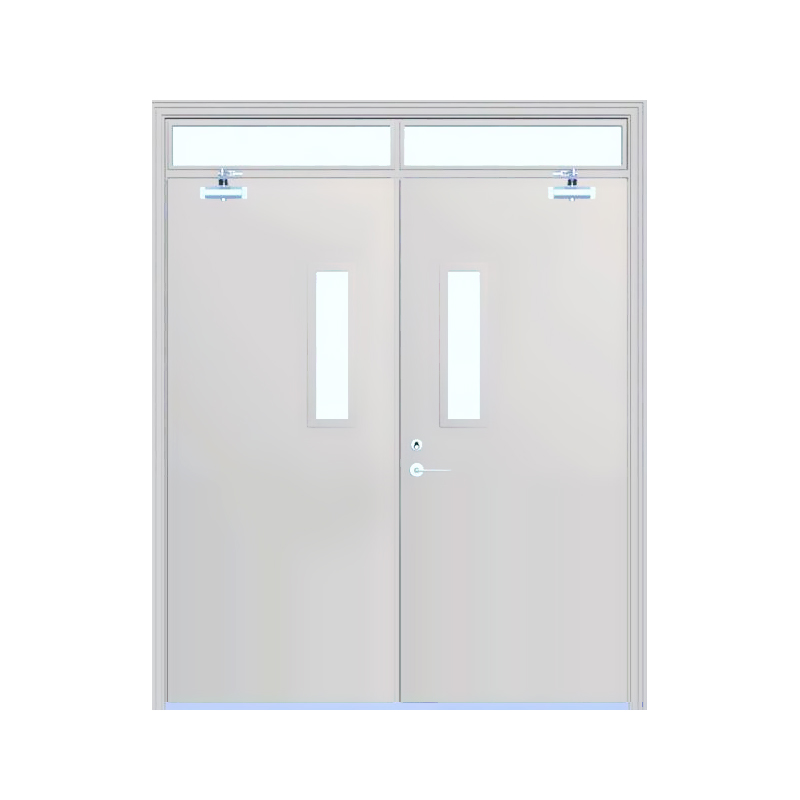

The design of cleanroom doors significantly impacts air […]
The design of cleanroom doors significantly impacts airflow and pressure control within a cleanroom, both of which are critical to maintaining the cleanroom's integrity and classification. Here’s how various aspects of cleanroom door design contribute to these factors:
1. Sealing and Airtightness
Tight Seals
Gasket Seals: High-quality gasket seals around the door frame ensure that when the door is closed, it is airtight. This prevents unwanted air exchange between the cleanroom and adjacent areas, maintaining the required pressure differentials.
Automatic Closing Mechanisms: Doors with automatic closing mechanisms ensure they close fully and securely every time, enhancing airtightness.
Impact on Airflow and Pressure Control
Maintaining Pressure Differentials: Tight seals help maintain the specified positive or negative pressure differentials between the cleanroom and surrounding areas. This is crucial for preventing contamination from entering the cleanroom (positive pressure) or preventing hazardous substances from escaping (negative pressure).
Controlled Air Exchange: Proper sealing ensures that air exchange occurs only through controlled HVAC systems, maintaining the cleanroom's controlled environment.

2. Door Type and Operation
Sliding Doors
Smooth Operation: Sliding doors open and close along a horizontal plane, minimizing air disturbance. They are often used in spaces where maintaining pressure differentials is critical.
Space Efficiency: Sliding doors do not require swing space, reducing the potential for air disturbance when the door is opened or closed.
Swinging Doors
Sealed Hinges: High-quality swinging doors have sealed hinges to prevent air leakage.
Pressure Changes: Swinging doors can cause minor pressure fluctuations when opened and closed, but proper design and sealing mitigate this effect.
High-Speed Rolling Doors
Rapid Operation: High-speed doors open and close quickly, minimizing the time the cleanroom is exposed to different pressure zones. This rapid operation is beneficial for maintaining pressure control during high traffic periods.
3. Airflow Management
Air Curtain Integration
Air Curtains: Some cleanroom doors integrate air curtains that create a barrier of air when the door is opened. This helps maintain pressure differentials by preventing outside air from entering the cleanroom and cleanroom air from escaping.
Impact on Airflow and Pressure Control
Minimizing Contamination: By reducing the mixing of air from different areas, air curtains help maintain the cleanroom’s specified air quality and pressure levels.
4. Material and Surface Design
Smooth, Non-Porous Surfaces
Ease of Cleaning: Smooth surfaces are easier to clean and disinfect, ensuring that door surfaces do not harbor contaminants that could impact air quality.
Reduced Particle Generation: Non-porous, smooth materials reduce the risk of particle generation from the door itself, which is crucial for maintaining cleanroom standards.
Impact on Airflow and Pressure Control
Consistent Air Quality: Clean door surfaces contribute to maintaining the overall air quality within the cleanroom, supporting the HVAC system's efforts to regulate airflow and pressure.
5. Integration with HVAC Systems
Seamless Integration
Pressure Relief Systems: Doors can be designed to work with pressure relief systems that balance pressure fluctuations caused by door operation.
Controlled Airflow: The door design ensures that air handling systems can effectively control the cleanroom environment, maintaining consistent airflow and pressure.
Impact on Airflow and Pressure Control
Balanced Airflow: Properly integrated doors help maintain balanced airflow, preventing turbulence and ensuring that the cleanroom's laminar flow is not disrupted.
Pressure Consistency: Integration with HVAC systems ensures that pressure differentials are maintained consistently, even during door operation.
Cleanroom door design plays a pivotal role in controlling airflow and maintaining pressure differentials, which are essential for preserving the cleanroom's integrity and classification. By ensuring airtight sealing, smooth operation, proper material choice, and seamless integration with HVAC systems, cleanroom doors help maintain the controlled environment necessary for high-level cleanroom performance.
Our new models offer superb design;competitive prices and their new features give them distinct advantages over similar products from other manufacturers.